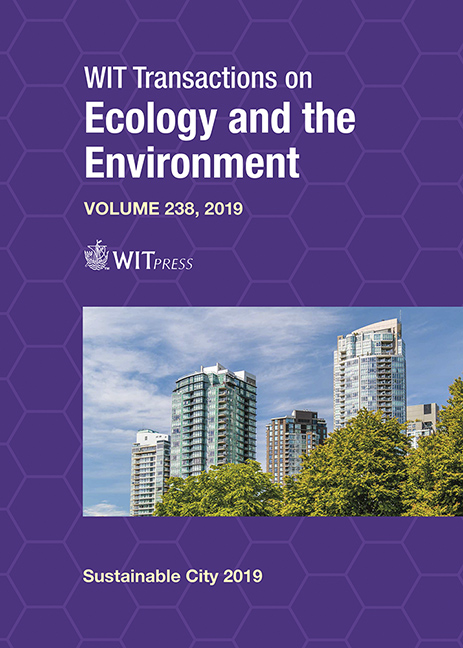INJECTING RESIDENTIAL INDUSTRIAL NEIGHBOURHOODS AND PLOTTING BUILT-UP AREAS EXPOSED TO INDUSTRIAL AIR POLLUTANTS IN THE ARAB REPUBLIC OF EGYPT
Price
Free (open access)
Transaction
Volume
238
Pages
12
Page Range
343 - 354
Published
2019
Paper DOI
10.2495/SC190311
Copyright
WIT Press
Author(s)
NOUR EL DIN MAHMOUD, ALI F. BAKR, AMIRA A. FATHI
Abstract
The aim of this study is to develop a strategy for predicting the highest quality areas, in terms of their non-exposure to industrial air emissions. This is achieved through listing the built-up areas next to the industrial zones concerned. Illustrating the parameters of air pollution emissions from industrial activities in the region by the air modeling technique, and integrating data and information obtained using geographical signature programs in order to obtain an informational map that can be used in analyzing the data for the future planning of housing in close proximity to industrial areas. This study was conducted on an area of 49 km2, Abu Qir Bay, east ofp the city of Alexandria, Egypt. The study showed that the safe areas of exposure to nitrogen oxides represent 8% of the study sample area (49 km2). 3.5% represents the largest safe area located in the north-west of the industrial zone, 1.6% of the safe areas is located in the southern industrial zone towards the prevailing wind, and, finally, the ratio of built-up areas facing industrial emissions was revealed at 2.5% of the entire study area in the southern industrial zone. It is concluded that, by using the simulated gaseous emissions of industrial facilities and integrating it with geo-analytical maps of the built-up satellite-explored areas, a strategy for predicting the safe areas could be applied. The study recommends that residential urban planning decisions in industrial zones should be obtained through periodically monitoring the emissions. The researcher recommends the use of the results of this study as a guide, using (RS) satellites to detect and map built-up areas near industrial facilities, air-modelling techniques to predict the hazardous zones of the industry, and (GIS) to layer the information digitally, in order to take precise future urban planning decisions.
Keywords
residential industrial complex, hazard distances, NOX emission rates, petrochemical industries buffer zones, planning residential industrial neighborhoods, remote sensing built-up regions, NDVI reclassification, fertilizers industry, air modelling, indust





